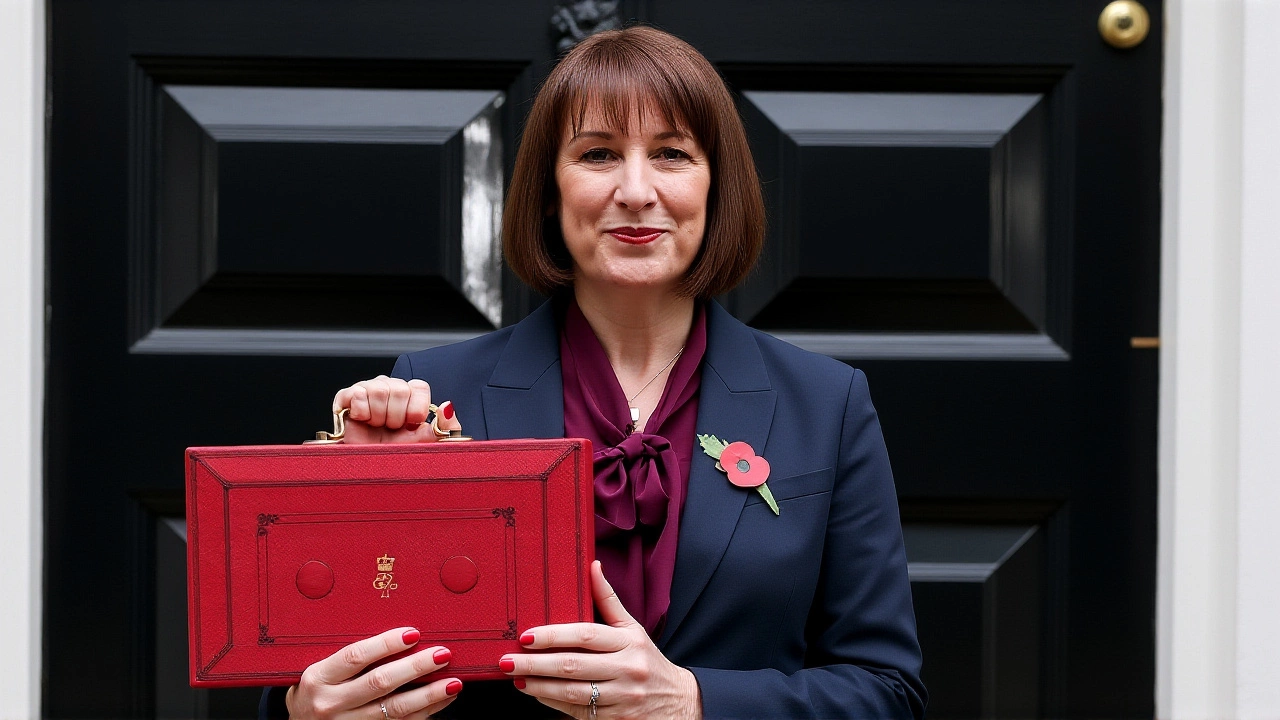On March 17, 2025, President Donald Trump signed a year-long continuing resolution that slashed $13 billion from domestic programs while boosting defense and select housing funds — a move that housing advocates, healthcare workers, and state governors warn is pushing millions toward instability. The bill, extending federal funding through September 2025, didn’t just tweak budgets — it rewrote priorities. And the consequences are already rippling across hospitals, shelters, and school districts.
HUD Funding: A Mirage of Increase
The Department of Housing and Urban Development received a $3.65 billion boost to its Tenant-Based Rental Assistance (TBRA) program, bringing total funding to $32.14 billion. On paper, that sounds like progress. But here’s the catch: when current vouchers expire, an estimated 32,000 low-income families will lose their housing subsidies — not because funding dropped, but because inflation and rising rents outpaced the increase. The National Low Income Housing Coalition called it a "funding illusion." Meanwhile, public housing operations remained flat at $5.5 billion — a number that hasn’t kept pace with maintenance costs since 2010.
The HOME program, which helps states build affordable housing, got $1.25 billion — $750 million more than the House wanted, but $200 million less than the Senate proposed. The Preservation and Reinvestment Initiative for Community Enhancement (PRICE) program, created in FY23, got $10 million — enough to keep the lights on, but not enough to repair a single crumbling apartment building.
The Homelessness Time Bomb
Then came November 2025. Two months late, HUD released new funding rules that capped supportive housing — services like mental health counseling, job training, and case management — at just 30% of total HUD funding. In 2024, that number was 90%. The National Alliance to End Homelessness calculated that this single policy shift could force 170,000 people into homelessness by 2026. That’s more than the population of Boise, Idaho, suddenly without shelter.
Peggy Bailey, executive vice president at the Center on Budget and Policy Priorities, told NOTUS: "This isn’t a policy adjustment — it’s a dismantling. Providers have already canceled staff, paused intake, and shut down outreach teams because they don’t know if they’ll get paid in January."
That’s when Josh Shapiro, Governor of Pennsylvania, filed a federal lawsuit. "The Trump Administration is trying to abruptly dismantle the very system Congress created to fight homelessness," he said. "Pennsylvanians depend on this funding. Now, we’re being forced to pick up the tab — or watch people sleep on subway grates." His lawsuit targets over $100 million in cuts to Pennsylvania’s homelessness prevention programs, which served 87,000 people last year alone.

Medicaid Cuts: A Hidden Health Crisis
Beneath the housing headlines, a far larger disaster is unfolding. According to the National Education Association, the budget includes roughly $1 trillion in Medicaid cuts — the largest reduction in the program’s history. The Center on Budget and Policy Priorities projects 17 million Americans will lose coverage by 2034. That includes 38 million children — one in every four kids in public schools — and 1 in 10 education support staff who rely on Medicaid for prescriptions, therapy, and prenatal care.
Cynthia Blankenship, NEA’s health policy expert, put it bluntly: "When Medicaid funding drops, hospitals close. Doctors stop taking patients. Schools lose nurses. And then employers raise premiums — because suddenly, workers are paying for care they used to get for free. It’s not just a health crisis. It’s an economic one."
The Bigger Cuts: Food, Community, and Medicare
The White House’s FY26 budget request, unveiled in May 2025, went further. It proposed eliminating 16 categorical grants — including the Community Services Block Grant (CSBG), which funds local food pantries, energy assistance, and job training centers. Its $770 million cut would shutter 2,300 Community Action Agencies nationwide. The justification? "Dollars that flow to agencies who carry out their own agendas," including "equity-building and green energy initiatives."
Food for Peace, the program that ships emergency grain to famine zones, faced a $1.6 billion cut. The White House claimed "one-third of food spoils en route." But critics point out that the program’s logistical delays stem from decades of underinvestment in port infrastructure — not the program itself. A 2023 GAO report found that reducing funding would actually increase waste by forcing bulk shipments to smaller, less efficient distributors.
Then there’s Medicare. In November 2025, the administration rolled out site-neutral payment reforms for drug administration services — meaning hospitals that serve low-income communities now get paid less than private clinics for the same injections. The Congressional Budget Office estimated $6 billion in savings; CMS projected $8 billion. But as Rep. Mike Flood of Nebraska admitted at a November presser: "We’ve made a conscious effort this year to focus on home affordability..." — a telling phrase. Because this wasn’t about efficiency. It was about ideology. And the cost? Hospitals in rural Alabama, urban Detroit, and tribal communities in South Dakota are already preparing to lay off nurses and shut down infusion centers.

What Happens Next?
January 2026 looms large. With HUD’s new rules taking effect, state agencies are scrambling. In Ohio, the housing authority stopped accepting new TBRA applications. In California, shelters reported a 40% spike in families seeking emergency beds. Meanwhile, Medicaid providers are bracing for a wave of uninsured patients — and the lawsuits are piling up. Pennsylvania isn’t alone. New York, Illinois, and Oregon have signaled they’ll join Shapiro’s legal challenge.
What’s clear: this isn’t just a budget. It’s a redefinition of who the federal government serves. And for the first time in decades, the people most affected aren’t just asking for help — they’re demanding accountability.
Frequently Asked Questions
How will the HUD funding changes affect families already receiving rental vouchers?
Even with the $3.65 billion increase to TBRA, inflation and rising rents mean the funding won’t cover new leases after current vouchers expire. The National Low Income Housing Coalition estimates 32,000 households will lose assistance in 2026. Families will be forced to choose between rent, food, or medicine — and many will end up in shelters or doubled up with relatives. The late HUD notice means providers can’t plan, leaving thousands in limbo.
Why is capping supportive housing at 30% so damaging?
Supportive housing isn’t just a place to sleep — it’s counseling, medication management, job training, and transportation. Studies show that for every $1 spent on supportive housing, $1.25 is saved in emergency services. Capping it at 30% means shelters can’t hire case managers, mental health workers, or outreach teams. The result? More ER visits, more arrests, more children in foster care. The $170,000 projected homeless increase isn’t theoretical — it’s math.
Who will be hit hardest by the Medicaid cuts?
Children, elderly patients, people with disabilities, and rural communities. Medicaid covers nearly half of all births in the U.S. and 60% of nursing home residents. The cuts will force hospitals to close, especially in the South and Midwest. Teachers and school staff who rely on Medicaid for mental health care will lose coverage. And since Medicaid is tied to CHIP, 38 million children face gaps in dental, vision, and immunization services.
What’s the connection between the Community Services Block Grant cut and homelessness?
The $770 million cut to CSBG eliminates funding for 2,300 Community Action Agencies that provide emergency rent help, utility assistance, and food pantries — all critical buffers against homelessness. In 2024, these agencies helped 1.8 million families avoid eviction. Without them, local shelters will be overwhelmed. A single cut to CSBG can trigger a chain reaction: no heat → no rent → eviction → homelessness.
Why did the Trump administration target Food for Peace?
The administration claims $1.6 billion is wasted shipping food overseas. But the real issue is infrastructure — ports, storage, and distribution networks haven’t been modernized since the 1980s. Cutting funding won’t fix logistics; it’ll just starve people in famine zones. A 2023 GAO report found that reducing funding increases waste by forcing inefficient bulk shipments. The real cost? Lives lost to hunger — and U.S. credibility abroad.
Is there any legal recourse for affected states and organizations?
Yes. Pennsylvania’s lawsuit argues the HUD rule violates the Administrative Procedure Act by being arbitrary and capricious. Other states are preparing similar suits. Legal experts say the late notice and drastic policy shift may be deemed unlawful. Additionally, Medicaid cuts could violate the Equal Protection Clause if they disproportionately harm low-income communities. The courts may become the last line of defense for millions.
